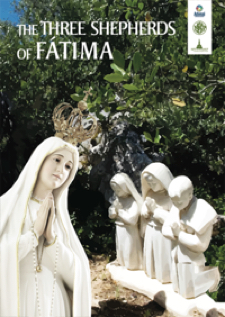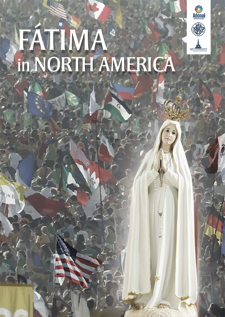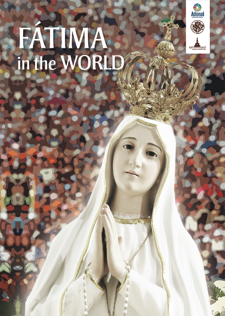May 13, 2017, is the 100th anniversary of the first apparition of Mary to these three young shepherd children at Fátima. On that day, Pope Francis will be in Fátima, and will canonize Jacinta and Francisco Marto, the two youngest ever non-martyred saints. This entire year, but especially the months of May and October are very special occasions to honor our Blessed Mother, renew our devotion to her, listen to and live more fully the message she brought at Fátima.
On on this week's Windows to the Soul segment on the Salt + Light Radio Show, I was asked to pick the “best” film on Our Lady of Fátima. I cannot possibly pick the “best” film on Our Lady of Fatima, but I talked about my favorite three films on Fatima. Watching a film together on Fatima is a lovely way of emphasizing how important Mary is in our lives, and of thanking her for her tender care.
The heart of the message of Fátima, as I have remembered and prayed with through the years, can be summed up briefly as:
* Pray—especially the Rosary
* Repent of our sins and do penance for them
* Offer sacrifices for the conversion of others and offer reparation for the sins of humanity
* Trust in Mary’s Immaculate Heart
Below, I take a more detailed look at each film that is currently available, and how each is not just faithful to the message of Fátima, but if and how it communicates the message of our Blessed Mother in a way that is deeply moving, accessible, and relatable.

The Best of Them All: The Miracle of Our Lady of Fátima (1952)
The beloved classic from 1952, Miracle of Our Lady of Fátima. Dated in its presentation, and without the advantage of the latest information that is now public about Sr. Lucia and the apparitions (for example, Sr. Lucia’s later life, the secrets that Our Lady entrusted to the children). But for the most part, The Miracle of Our Lady of Fátima is quite accurate, with the exception of the dramatizing of some events (especially of some of the early attempts of the government to derail the apparitions), and a few details. The writers weave together true details about the apparitions, skillfully moving the story forward and revealing the character of the children and the life-changing impact that Mary's appearance had on them. For example, the fact that the second apparition occurs on the feast day of St. Anthony (a much-anticipated celebration of the town, especially for the children), this fact becomes both a plot point and character development for the children's desires to go "see the Lady" rather than celebrate.
What I love about this film is its overall focus on the children—their humanness and their holiness—in ways that are appealing and realistic. However, the film shows Lucia crying a bit too much. Yet it's a good reminder of how young the children really were: at the time, Lucia, who took the brunt of the plentiful criticism (of family, the townspeople, the pastor, the government officials), was only ten years old.
Some might quibble with a fictional character—Hugo—being inserted into the film. But I like to think that Hugo represents us, the viewers, in the story, in whatever way we are doubters, skeptics, or hold ourselves back from giving ourselves fully to God. Hugo is changed by his encounter with the children, and so the message of Fátima should change us, too.
The Miracle of Our Lady of Fátima makes the story and message of Fátima accessible to everyone, showing Our Lady to be a most tender and loving mother. It is appropriate and appealing to people of all ages.
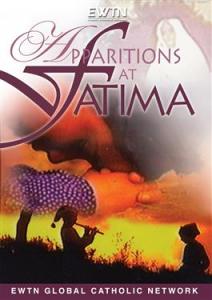
Historically Accurate: Apparitions at Fátima (Aparição)
Noted by Stephen Greydanus (Decent Films) as more historically accurate of the feature films on Our Lady of Fátima, Apparitions at Fátima (1991) is the only full-length feature about Fátima I know of that I haven’t seen. This 1991 film was made in Portugal, directed by Daniel Costelle, and is available in six languages, including English. I look forward to seeing it soon and updating this post with my review.
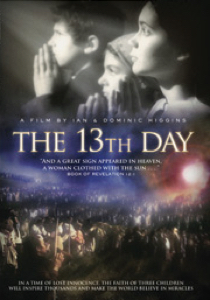
Reverent, Contemporary Portrayal: The 13th Day
The 13th Day (2010) is another feature film about the events that took place at Fátima. With modern techniques and pacing, noticeable special effects, and dramatic music, this film is both appealing to a general audience and historically accurate. In some ways, it seems imitative of The Miracle of Our Lady of Fátima, but the film also has many original moments. The dramatic black and white lighting used for the cinematography, the use of color only when the children are conversing with the Blessed Mother, and other special effects were a bit distracting for me, but they reverently and artistically portray Our Lady's message and the character of the visionaries. The scary vision of hell, and the depiction of the miracle of the sun could be too much for young children.

Delightful Depiction for Children: The Day the Sun Danced
The Day the Sun Danced (1997) is a beautifully animated short film (30 minutes) for children. The pacing is slower, so children may need to be prepared that the film is not so much entertainment as the fascinating story of the Blessed Mother bringing a very special message for the world to three children at Fátima.

Most Complete Documentary: Finding Fátima
Finding Fátima (2010)—made by the same filmmakers of The 13th Day— includes interviews with Fátima experts and reenactments excerpted from the film The 13th Day. I suspect this is the most complete documentary on Fátima in English available at this time, and especially beautiful for those who do not know the story. If you have heard rumors about the secrets of Fátima, this film gives a clear and beautiful explanation of the “Secret” of Fátima, which was told to the children by way of visions. 90 minutes.

Most Up-to-Date: Trilogy of Documentaries from the Basilica of Our Lady of Fátima, Portugal
Finally, I want to mention the newest programs I have found available: a trilogy that come from the Shrine at Fátima itself, and are officially approved by the Shrine. Each program is independent of the others.
My favorite documentary of the three is The Three Shepherds of Fátima — which focuses on the lives of the three children. Just under an hour, this delightful program is wonderful for those who want insights into the lives of the “youngest saints ever to be canonized who aren’t martyrs.” After years of reading and praying about Fátima, I learned new fascinating details about the spiritual lives and personalities of the children, thanks to all the experts, but especially the postulator for the cause of the children’s cause for canonization, Sr. Angela de Fátima (a sister of the Alliance of Holy Mary), who points out the significance of the words, actions, characteristics of the children.
One of my favorite examples is from Francisco. When the children were imprisoned and they couldn’t make their “appointment” with Our Lady at the Cova, they believed their interrogator who said they were going to be put to death. Facing the threat of death, Francisco said, ““If we don’t get back to see our mother, patience. The problem is that Our Lady may never return. This is what costs me the most!” Such a deeply touching declaration for a 9 year old boy.
Jacinta's tender heart was so moved by the vision of the Pope suffering that she prayed often for the Pope, not even knowing which Pope would suffer so much. At her beatification, St. John Paul thanked her for praying for him!
These precious insights into the children of Fátima reveal a profound witnesses of their faith: how the Fátima apparitions changed their lives, and how living the Fátima message can change ours.
All of these DVDs are available from the Pauline Books and Media Center nearest you in the USA and Toronto; many are available at the Pauline online store.
